SUMMARY
This is AI generated summarization, which may have errors. For context, always refer to the full article.
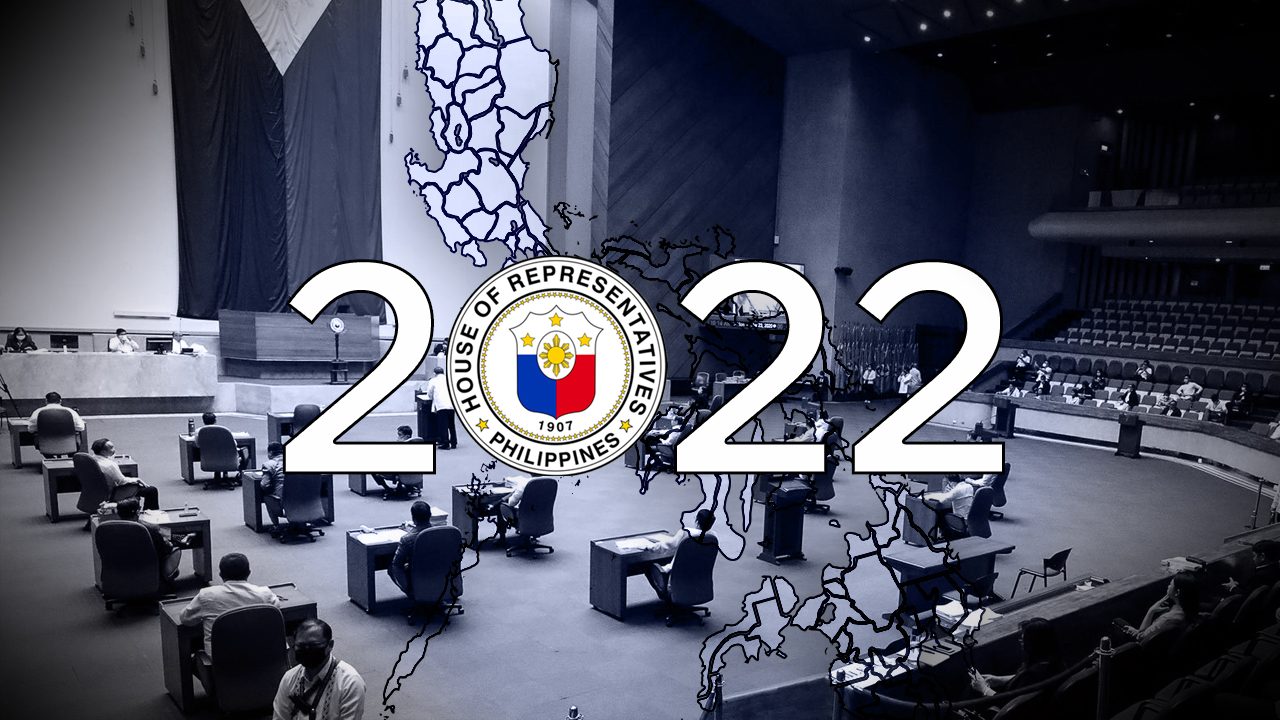
MANILA, Philippines – For many party-list groups, winning a seat in the House of Representatives seems to employ the same strategy in owning real estate or starting a business: it’s about location, location, location.
Like in past party-list polls, many groups banked on their bailiwicks – either of the group or their nominees – to garner enough votes to earn up to three seats of the 63 allotted for the party list in the House in the 2022 elections.
As many as 20 winning groups got at least 50% of their votes from just one region or province.
Take the Alliance of Organizations, Networks & Associations of the Philippines (Alona). It ranked 56th in the party-list race, the last group to enter the winning circle, with 238,704 votes.
A whopping 97% or 231,236 of its votes came from just the Calabarzon region. The bulk of that, 209,598 votes, is from one province alone: Quezon, where Alona’s first nominee, Anna Marie Villaraza-Suarez of the Suarez political clan, hails from.
This pattern also emerged when Alona first entered the House in 2016, and got reelected in 2019.
Among the winning groups in 2022, Alona had the biggest chunk of their votes taken from just one region.
New party-list group Uswag Ilonggo also exhibited this. Some 664,108 or 96% of its 689,607 total votes were obtained from Western Visayas alone. It topped the party-list race in four provinces – Aklan, Capiz, Guimaras, and Iloilo – and in Iloilo City, with a combined 594,169 votes from these areas.
Uswag Ilonggo intended to be Western Visayas’ first regional party list in Congress.
Eighteen more groups also had majority of their votes coming from a single region.
The main vote sources of these 20 groups span the country. For instance, Ilocos is "home" to three such party-list organizations, thanks in part to its nominees who are from or based in the region:
- Abante Pangasinan-Ilokano Party (API) – 426,634 (95% of total votes) from the region alone, with 424,873 from Pangasinan
- Abono – 257,840 (89% of total votes) from the region alone, with 249,558 from Pangasinan
- Probinsyano Ako – 270,526 (57% of total votes) from the region alone, with 261,929 from two provinces, Pangasinan and La Union
In Calabarzon, three more groups besides Alona got over 50% of their votes there:
- Anakalusugan – 70%, and placing second in Batangas
- Agricultural Sector Alliance of the Philippines (Agap) – 69%, and topping the race in Batangas
- Agimat – 55%, and ranking first in Cavite and Rizal
Bicol has two party-list groups in the House now: perennial winner Ako Bicol (which had 68% of its total votes from that region), and neophyte Bicol Saro (with 65% of its total votes).
Here are the other groups in this category, and the region (and province) where they received more than half of their votes:
- LPG Marketers Association (LPGMA) – Cagayan Valley (mostly from Cagayan and Isabela)
- Galing sa Puso (GP) Party – Central Luzon (Nueva Ecija)
- Pusong Pinoy – Central Luzon (Bataan)
- Abang Lingkod – Western Visayas (Negros Occidental, including Bacolod City)
- Ang Asosasyon Sang Mangunguma Nga Bisaya - Owa Mangunguma (AAMBIS-OWA) – Western Visayas (Iloilo)
- Ako Bisaya – Central Visayas (Cebu, including Cebu City)
- An Waray – Eastern Visayas (Leyte, Eastern Samar, and Samar)
- Dumper Philippines Taxi Drivers Association (Dumper PTDA) – Davao Region (Davao Occidental and Davao del Sur, including Davao City)
- Puwersa ng Bayaning Atleta (PBA) – Davao Region (Davao City)
- Kusug Tausug – BARMM (Sulu)
Banking on Metro Manila, nearby regions
Some 14 winning groups got a substantial boost from another "prime location": vote-rich Metro Manila, Central Luzon, and Calabarzon, which have a combined 23.8 million registered voters. These organizations either had the three regions as their top vote sources, or received over 50% of their total votes from there.
Among them is reelectionist group Patrol, which obtained 202,128 or 80% of its 252,571 total votes from these regions.
Overall second-placer and newcomer 1-Rider Partylist got 736,930 or 74% out of 1,001,243 total votes from there. Another new group, Tutok to Win, garnered nearly 58% of its votes from these areas.
Part of this category, too, are members of the Makabayan bloc: Gabriela (70% of their total votes), Kabataan (70%), and ACT Teachers (50%).
2022 party-list race topnotcher ACT-CIS also got close to 50% of their votes from there, and ranked first in the party-list races in each region. It also topped the polls in the Cordillera Administrative Region and Mimaropa, and received over 100,000 votes in Cagayan Valley, Western Visayas, and Central Visayas.
Reelectionist groups Citizen's Battle Against Corruption (Cibac), Bagong Henerasyon (BH), Kabalikat ng Mamamayan (Kabayan), Magsasaka, Senior Citizens, and Duterte Youth likewise had between around 40% and 70% of their total votes from these three regions.
United Senior Citizen party list also exhibited this pattern, but the group has yet to be proclaimed and given a House seat, pending the resolution of the case filed against it with the Commission on Elections.
Meanwhile, four winners did not have all the three regions as their top three vote sources, because they also sourced votes from other regions. But the combined votes they got from Metro Manila, Central Luzon, and Calabarzon were at least 50% of their total:
| Party-List Group | Top vote sources |
|---|---|
| Komunidad ng Pamilya Pasyente at Persons With Disabilities (P3PWD) | Metro Manila – 34% Calabarzon – 18% Western Visayas – 13% Central Luzon – 11% |
| Social Amelioration & Genuine Intervention on Poverty (Sagip) | Calabarzon – 29% Central Luzon – 19% Ilocos Region – 10% Mimaropa – 10% Metro Manila – 8% |
| Pinatatag na Ugnayan para sa mga Oportunidad sa Pabahay ng Masa (Pinuno) | Central Luzon – 32% Western Visayas – 18% Calabarzon – 15% Metro Manila – 7% |
| Kalinga-Advocacy for Social Empowerment and Nation-building through Easing Poverty (Kalinga) | Calabarzon – 25% Metro Manila – 13% Western Visayas – 13% Mimaropa – 12% Central Luzon – 12% |
Majority from two regions
Meanwhile, five winning party-list groups got the majority of their votes from just two regions, then usually supplemented by votes from adjacent regions.
For example, reelected group Philippine Rural Electric Cooperatives Association (Philreca) garnered nearly 90% of its total votes from the four regions north of Metro Manila: Cordillera, Ilocos, Cagayan Valley, and Central Luzon.
This pattern was also the case for the Association of Philippine Electric Cooperatives (APEC), which cornered 78% of its votes from all three regions in the Visayas.
Another reelectionist organization, Trade Union Congress of the Philippines (TUCP), got 74% of its votes from the southern Mindanao regions: Soccsksargen, the Bangsamoro Autonomous Region in Muslim Mindanao (BARMM), and Davao Region.
Rounding out this category are: Ako Ilokano Ako (AIA), with 38% from Ilocos Region and 17% from Metro Manila; and Tingog Sinirangan, with 47% from Eastern Visayas and 7% from Northern Mindanao.
'Wide' reach
The rest of the winning groups have their vote distribution somewhat evenly spread out across the country. Eight reelectionist groups and five new party-list organizations make up this list.
The highest-ranked among them is the Pagtibayin at Palaguin ang Pangkabuhayang Pilipino (4PS), at 4th place in the overall race. The group's top three vote sources are Eastern Visayas (13% of its total votes), Metro Manila (11%), and BARMM (10%).
Success not automatic
The reliance on bailiwicks doesn't always work, however. With 177 party-list groups courting voters, some groups might not muster enough votes to make the cut and earn a House seat.
Two groups that topped a regional race didn't make it into the winning circle.
Asenso Pinoy, the top vote-getter in Northern Mindanao, obtained a total of 232,229 votes nationwide, 3/4 of which are just from its "home" region alone. However, Asenso Pinoy ranked 59th nationwide and was just some 6,500 votes behind Alona, the 56th and last group to earn a seat, given the complicated computation for the House seats' allotment.
The other group, Subanen, topped the race in Zamboanga Peninsula with 71,887 votes, but obtained only an additional 14,646 votes elsewhere. Subanen ranked too far away from the winning circle, at 114th place with a total of 86,533 votes.
Subanen faced stiff competition in Zamboanga Peninsula, with the likes of PDP Cares Foundation (with 58,979 votes), Ang Probinsyano (54,902 votes), ACT-CIS (53,562 votes), and Kusug Tausug (42,403 votes). – Rappler.com
Add a comment
How does this make you feel?
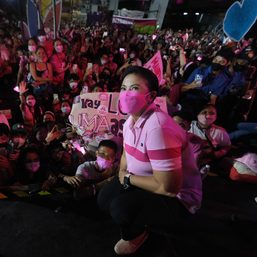


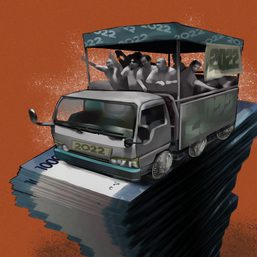
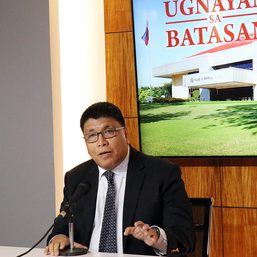

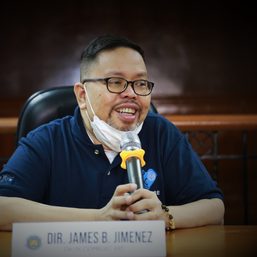
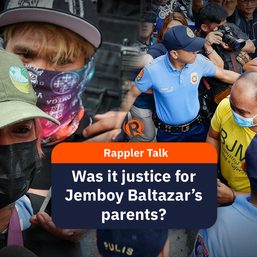
![[New School] Tama na kayo](https://www.rappler.com/tachyon/2024/02/new-school-tama-na-kayo-feb-6-2024.jpg?resize=257%2C257&crop=290px%2C0px%2C720px%2C720px)
There are no comments yet. Add your comment to start the conversation.